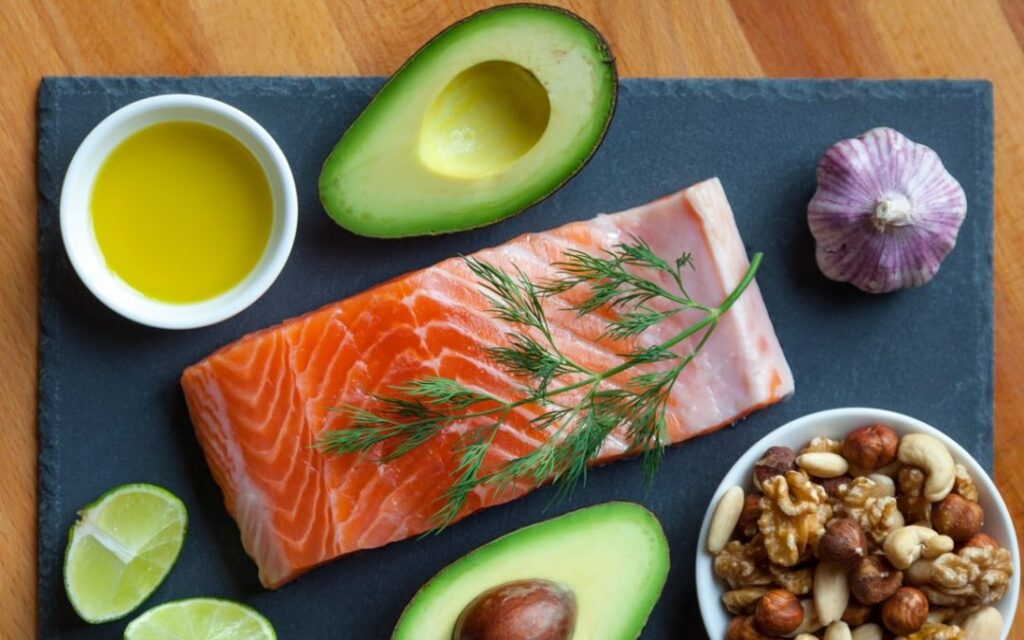
Have you been on the ketogenic diet plan or living a low-carb lifestyle for a while and are finding it easier than you thought? Keto fever is long gone and all the fat you can eat is delicious! Increasing body fat to 75% or higher is not difficult. Sometimes it’s a good idea to check the quality of the macronutrients you eat. That’s why it’s helpful to learn more about the best foods to eat on the keto diet.
1: Eggs in the Keto Meal Plan
From a keto meal perspective, we can say that eggs have the best macronutrient ratio. So more than 60% of calories come from fat, about 35% from proteins, and about 2% from carbohydrates. But this example is just icing on the cake compared to the many health benefits of eating eggs. In addition to providing essential nutrition, eggs also contain many medicinal properties that have been shown to have therapeutic benefits.
2: Coconut in the Ketogenic Diet Plan
More than 95% of coconut oil is fat. Approximately 34% of scraped coconut is fat and coconut milk is approximately 24% fat. Approximately 92% of this fat is saturated fat. And as we all know, saturated fatty acids are associated with atherosclerosis, ischemic heart disease and cerebrovascular diseases. This is where negative thoughts arise.
However, the saturated fat in coconut oil is not the same as that found in animals. This is because more than half of the fat in coconut consists of medium-chain triglycerides (MCT). Unlike long-chain fatty acids, these fatty acids are well absorbed by the small intestine and do not undergo degradation processes. In this way, they can be used directly to produce energy in the body. Therefore, they can be used in sports drinks, intravenous fluids, and baby foods.
3: Avocado in Keto Diet Plan
We can say that avocado is the only fruit recommended for people who lead a carbohydrate-free and ketone-free lifestyle. Therefore, unlike other fruits, avocados contain very little sugar; It contains only about 0.4 grams of sugar per fruit. Moreover, the total carbohydrate content of avocado is about 9%, the majority of which is fiber. Fat content is up to 15%. Most of the rest is water.
One of the many advantages of avocado is that it is farm food, meaning it does not require labor or cooking to taste good. Moreover, its nutritional value makes it a “super fruit”, especially when it comes to heart diseases.
4: Olive Oil in the Keto Meal Plan
The main products of olive oil that we can find in the market are “virgin olive oil” and “extra virgin olive oil”. The chemical composition of both is similar. If you want more olive oil, you probably don’t want to buy a product called “olive oil.” This product contains a very small amount (5-10%) of olive oil in addition to the original olive oil. Therefore, its micronutrient content is lower than olive oil. But the content is still higher than in seeds.
So what are the health benefits of virgin olive oil-rich meal plan? Studies have demonstrated that, when it replaces a carbohydrate-rich meal plan, triglycerides are reduced and the HDL (“good”) cholesterol levels are increased. Moreover, it tends to reduce LDL (“bad”) cholesterol levels, and improve glucose metabolism in diabetes.
The list of other possible positive health effects is not short. Some of these effects are related to the high content of MUFA, but others depend on the virgin oil’s richness in micro components. Overall, this intake is effective in improving blood lipid profile and supporting antioxidant and anti-inflammatory properties.
If olive oil were a food in itself, it would be the best food in the ketogenic diet plan!
5: Fish on the Ketogenic Diet Plan
Fish and fish oil are the best options when it comes to polyunsaturated fatty acids and trying to achieve a healthy omega-6/omega-3 ratio. Omega-3 PUFAs obtained from fish oils have more biological potency than those obtained from plants. Marine omega-3 fatty acids consist of eicosapentaenoic acid (EPA) and docosahexaenoic acid (DHA), which are not found in plant-derived omega-3 fatty acids such as flaxseed oil. Fish is not only fat but also the best source of protein and selenium.
Many studies indicate that omega-3 fatty acids have anti-inflammatory properties. This makes them potentially useful in the management of inflammatory and autoimmune diseases. When humans digest fish or fish oil, the EPA and DHA partly replace the omega-6 fatty acids. This, unfortunately, does not mean that one can balance out the high amounts of omega-6 fatty acids in the Western-style meal plan by just adding a fish or two to their lunch. But doing so might help to remain healthy.
Now that you know the best foods to eat on the keto diet, what’s in your keto diet for tomorrow? I recommend an omelette with eggs and avocado in coconut oil for breakfast, and grilled wild salmon fillet marinated in extra virgin olive oil for lunch. Add some rosemary and greens. Enjoy your meal!